- Home
- William Shakespeare
The Arden Shakespeare Complete Works
The Arden Shakespeare Complete Works Read online
THE ARDEN SHAKESPEARE COMPLETE WORKS
THE ARDEN SHAKESPEARE COMPLETE WORKS
Edited by Richard Proudfoot, Ann Thompson and David Scott Kastan
Consultant Editor Harold Jenkins
Illustrations from the print original have been removed for copyright reasons but readers will find references to them in the introduction.
Advisory Note re page layout: Please note you may need to adjust the font size on your e-reading device to achieve optimal viewing and to preserve the verse lineation of the play text.
CONTENTS
Cover
Title Page
List of illustrations
General Editors’ preface
Introduction
Why Shakespeare?
Shakespeare: the life
Shakespeare and the theatre
Shakespeare in print
Shakespeare’s reading and reading Shakespeare
Afterlife
Shakespeare’s Sonnets
A Lover’s Complaint
Edited by Katherine Duncan-Jones
Venus and Adonis
Lucrece
The Passionate Pilgrim
‘The Phoenix and Turtle’
Edited by F.T. Prince
All’s Well That Ends Well
Edited by G.K. Hunter
Antony and Cleopatra
Edited by John Wilders
As You Like It
Edited by Agnes Latham
The Comedy of Errors
Edited by R.A. Foakes
Coriolanus
Edited by Philip Brockbank
Cymbeline
Edited by J.M. Nosworthy
Hamlet
Edited by Harold Jenkins
Julius Caesar
Edited by David Daniell
King Henry IV, Part 1
Edited by A.R. Humphreys
King Henry IV, Part 2
Edited by A.R. Humphreys
King Henry V
Edited by T.W. Craik
King Henry VI, Part 1
Edited by Edward Burns
King Henry VI, Part 2
Edited by Ronald Knowles
King Henry VI, Part 3
Edited by A.S. Cairncross
King Henry VIII
Edited by Gordon McMullan
King John
Edited by E.A.J. Honigmann
King Lear
Edited by R.A. Foakes
King Richard II
Edited by Peter Ure
King Richard III
Edited by Antony Hammond
Love’s Labour’s Lost
Edited by H.R. Woudhuysen
Macbeth
Edited by Kenneth Muir
Measure for Measure
Edited by J.W. Lever
The Merchant of Venice
Edited by John Russell Brown
The Merry Wives of Windsor
Edited by Giorgio Melchiori
A Midsummer Night’s Dream
Edited by Harold F. Brooks
Much Ado About Nothing
Edited by A.R. Humphreys
Othello
Edited by E.A.J. Honigmann
Pericles
Edited by F.D. Hoeniger
Romeo and Juliet
Edited by Brian Gibbons
The Taming of the Shrew
Edited by Brian Morris
The Tempest
Edited by Virginia Mason Vaughan and Alden T. Vaughan
Timon of Athens
Edited by H.J. Oliver
Titus Andronicus
Edited by Jonathan Bate
Troilus and Cressida
Edited by David Bevington
Twelfth Night
Edited by J.M. Lothian and T.W. Craik
The Two Gentlemen of Verona
Edited by Clifford Leech
The Two Noble Kinsmen
Edited by Lois Potter
The Winter’s Tale
Edited by J.H.P. Pafford
Bibliography
Glossary
Imprint
LIST OF ILLUSTRATIONS
Illustrations have been removed for copyright reasons, though some references to them may still exist.
General Editors’ Preface
The texts in this volume were edited for the second and third series of the Arden Shakespeare. The second series (Arden 2; General Editors: Una Ellis-Fermor, Harold F. Brooks, Harold Jenkins and Brian Morris) was published in thirty-eight volumes between 1951 and 1982. The third series (Arden 3; General Editors: Richard Proudfoot, Ann Thompson and David Scott Kastan) began publication in 1995. We decided to include both Arden 2 and Arden 3 texts in this volume, despite some changes in editorial convention and the minor inconsistencies resulting from them. The other possible courses, to reissue Arden 2 texts which had been replaced, or to wait many years for completion of Arden 3, had less to recommend them.
The first edition of this volume included the seven Arden 3 texts published to date, five of which replaced early Arden 2 editions: Antony and Cleopatra, King Henry V, King Lear, Othello and Titus Andronicus; together with two, The Two Noble Kinsmen and Shakespeare’s Sonnets, which Arden 2 did not include. This revised edition includes a further eight Arden 3 texts: Julius Caesar, King Henry VI, Part 1, King Henry VI, Part 2, King Henry VIII, Love’s Labour’s Lost, The Merry Wives of Windsor, The Tempest and Troilus and Cressida.
Some conventions of presentation and layout newly introduced for Arden 3 have been adopted throughout this volume. These include: the use of arabic numerals for act and scene numbers and the reduced prominence of those numbers on the page; the adoption of unabbreviated names for use as speech prefixes; removal of all editorial notes of location of action (most of which were the inventions of eighteenth-century editors and relate to the theatre of that period); substitution of ‘List of Roles’ for ‘Dramatis Personae’; and translation of Latin stage directions with the exception of the familiar Exit. ([s]he goes out) and Exeunt. (they go out). Where conventional scene divisions have been altered, the rejected scene and line numbers are recorded in square brackets for purposes of reference.
Minor inconsistency will be found in the Arden 3 texts in respect of (a) treatment of elided syllables; (b) spelling; (c) forms of stage directions.
(a) No elisions are marked in Arden 3 texts unless they indicate pronunciation differing from late twentieth-century English usage. For metrical reasons, the ‘-ed’ ending of past participles was sometimes sounded in verse passages, contrary to normal pronunciation. After his earliest plays Shakespeare made sparing use of this licence, and Arden 3, accordingly, does not adopt the familiar practice of drawing attention to such usage in the text. The convention used by Arden 2 was to print non-syllabic ‘-ed’ as ‘-’d’, which usually indicates normal modern pronunciation by use of an obsolete spelling form.
(b) Arden 2 editors were encouraged to retain obsolete spellings from the early editions if they believed that they might indicate the Elizabethan pronunciation of a word. Arden 3 adopts the practice of thorough modernization, on the grounds that the relation of spelling to pronunciation is imperfectly understood and was certainly variable and erratic. What has been clearly demonstrated is that, in the period before modern English spelling was stabilized, printers were already understood to be responsible for the spelling of books they printed – and also for punctuation (as they still are today). Consequently, few authorial spellings are likely to be present in the early editions, and those few are impossible to identify, in the absence of surviving manuscripts in Shakespeare’s hand which might ident
ify them. Variations in spelling are included in the glossary where they might otherwise cause confusion.
(c) Where stage directions have been added by editors (as very many have), Arden 3 prefers active verbs to present participles: e.g. [Reads.], not [reading]. The exact wording of stage directions throughout should be regarded as editorial, though in substance they most frequently derive from the source texts.
More radical differences of convention relate to King Lear. Instead of following the recent practice of presenting the 1608 Quarto and 1623 First Folio texts as two separate plays, the Arden 3 editor presents a single edited text, based on the First Folio, which incorporates all further words and passages present only in the Quarto. The conventions used to signal the differences between the two texts are explained in the note on the text on p. 631. Similar conventions are used for three passages in Titus Andronicus (see p. 1123) which are taken from sources other than the First Quarto of 1594. The Arden 3 editors of Henry V and Othello have chosen the more conventional course of not indicating readings and passages unique to the earlier Quartos incorporated into their Folio-based edited texts of those plays.
Image removed — rights not available
1 Title-page, with a portrait of Shakespeare engraved by Droeshout, from the First Folio, printed by Isaac Jaggard and Edward Blount, 1623.
Introduction
WHY SHAKESPEARE?
What is ‘Shakespeare’? A worldwide cultural phenomenon, a brand-name, a logo, an image that appears on T-shirts and credit cards, a mainstay of theatre, film and video production, a compulsory component of education, a label that sells thousands of books, a household name. Also an individual human being, born in a small English country town in 1564, a man who went to London and had a successful career as an actor, playwright and shareholder in the theatre. By all accounts an agreeable and modest man who did not seek to draw attention to himself, even by publishing his plays, though he does seem to have hoped that the fame of his Sonnets would outlive him. His surname has nevertheless become so familiar that his first name, William, does not need to be mentioned – is not indeed mentioned on the covers or title-pages of his works as published in ‘The Arden Shakespeare’: a person from another planet might work carefully through an entire volume in our series without discovering the first name of the author, but on our planet ‘everyone’ knows who he is. It has even become a kind of perverse tribute to him that periodically people attempt to prove that he didn’t write anything after all, that the works ascribed to him were in fact written by somebody else entirely.
The names of some of this man’s works have become so familiar themselves that we can even drop ‘Shakespeare’ without fear of being misunderstood when we talk of ‘Orson Welles’s Othello’ or ‘Kenneth Branagh’s Henry V’. Certain images have become instantly recognizable: a man dressed in black holding a skull ‘means’ Hamlet, a man talking to a woman above him on a moonlit balcony ‘means’ Romeo and Juliet. We quote Shakespeare all the time, sometimes unconsciously, using phrases that have dropped into common usage: ‘to have one’s pound of flesh’ (Merchant of Venice 1.3.148-9 and subsequently); ‘to the manner born’ (Hamlet 1.4.15); ‘more honoured in the breach than the observance’ Hamlet (1.4.16); ‘at one fell swoop’ (Macbeth 4.3.219). Compilers of crossword puzzles and quiz games routinely rely on Shakespearean quotations and references.
Words and phrases from the plays and poems have provided the titles of hundreds of novels, plays and films: one might cite Edith Wharton’s The Glimpses of the Moon (Hamlet 1.4.53), William Faulkner’s The Sound and the Fury Macbeth (5.5.27), Aldous Huxley’s Brave New World (The Tempest 5.1.183), Margaret Millar’s How Like an Angel (Hamlet 2.2.307–8), Agatha Christie’s By the Pricking of My Thumbs– Ray Bradbury completed the rhyme with his Something Wicked This Way Comes (Macbeth 4.1.44-5) – and H.E. Bates’s The Darling Buds of May (Sonnet 18, 3). The plays are still being performed live all over the world, and film and video versions have made them accessible to millions of people who never go to the theatre. They continue to inspire adaptations and spin-offs such as Peter Greenaway’s film Prospero’s Books (1991), Gus Van Sant’s film My Own Private Idaho (1992) and Alan Isler’s novel The Prince of West End Avenue (1994), all of which assume a prior knowledge of a Shakespeare text on the part of their viewers or readers.
How and why has this happened? Four hundred years after the heyday of Shakespeare’s own dramatic career we find ourselves arguing about whether his extraordinary fame and influence were somehow inevitable, a direct result of the intrinsic qualities of his works themselves, or a piece of sustained hype, the manipulation of a myth by those with a personal stake in its perpetuation – performers, teachers, publishers, Stratford-upon-Avon hoteliers – and by those with a more general interest in promoting British ‘high’ culture: Shakespeare has become ‘the Bard of Avon’, the ultimate canonical figure who is taken to represent the genius and values of an entire nation.
Shakespeare did do well during his lifetime out of what was the nearest thing Elizabethan and Jacobean London had to a mass entertainment industry. Unlike other dramatists of the time, he did most of his work for a single theatrical company, the Lord Chamberlain’s Men, under Elizabeth I, who became the King’s Men under James I. This stability in itself probably provided him with reasonably good working conditions and the opportunity to develop his work with known performers and business associates; it made it relatively easy for his complete works to be collected and published after he died. Other dramatists such as Thomas Middleton, who produced work for a number of different companies, had a less stable working environment and less chance of having their work collected or even identified.
The First Folio of Shakespeare’s plays was published in 1623, seven years after his death, and reprinted in 1632, but in 1642 the theatres were closed, and were to remain closed for nearly twenty years during the Civil War and Commonwealth period, potentially jeopardizing the chances of Shakespeare or any other dramatist achieving lasting fame. With the Restoration of the monarchy in 1660, however, the theatres reopened and Shakespeare’s plays came back into the repertory, albeit in truncated and altered versions. During the eighteenth century his reputation was consolidated by the publication of a number of scholarly editions and monographs, the erection of a monument in Westminster Abbey (1741) and the promotion of Stratford-upon-Avon as his birthplace and the site of David Garrick’s festival or ‘Jubilee’ (1769). While the plays were often rewritten wholesale for the contemporary stage, their texts were simultaneously being ‘restored’ with great care (and even more ingenuity) by editors who contributed largely to the ‘canonization’ of the author. This has essentially been the story of Shakespeare’s reception and cultural survival ever since: we still (in the total absence of manuscripts) pursue the chimaera of ‘what Shakespeare really wrote’, while on the other hand treating his texts as endlessly adaptable, available for rewriting, rereading and reinterpreting by each generation.
The plays have turned out to be equally suitable for export, and Shakespeare has been enthusiastically appropriated by many countries around the world. In Germany, for example, Ferdinand Freiligrath’s 1844 poem beginning ‘Deutschland ist Hamlet’ (‘Germany is Hamlet’) spelt out a long-lasting identification of the character of Hamlet with the German Romantic self-image of a people capable of profound reflection but incapable of action. In the United States, on the other hand, Shakespeare became a kind of symbol of racial and cultural integration and democracy, perhaps especially during the period when silent films made his work accessible to people who did not know English. In Japan, which imported Shakespeare relatively late in the nineteenth century, he quickly came to represent the essence of westernization and modernization. All these countries now have thriving Shakespeare industries of their own.
The globalization of Shakespeare was of course assisted by the political and economic spread of the British Empire in the nineteenth century and by the continuing dominance of English as a world
wide language after the decline of that Empire. What remains remarkable is that Shakespeare is actually quite a difficult writer linguistically – much harder to read today than most of his contemporaries such as Ben Jonson, Thomas Middleton or John Fletcher. His syntax is often complex, his figures of speech elaborate and his ideas hard to grasp. Some of this may be offset by the larger patterns of satisfaction we find in his plots and characters, and indeed it could be said that the difficulty itself leaves room for our explanations and interpretations. Shakespeare still ‘works’ in the theatre, but at school we have to be taught to ‘appreciate’ Shakespeare: is this indoctrination or something more benign – an educational process involving the ‘recognition’ of intrinsic merit?
In his essay Of the Standard of Taste, written in 1742, the philosopher David Hume argued that there is such a thing as intrinsic excellence in literature and that it is the continuity of a work’s reputation that proves it. What he calls ‘catholic and universal beauty’ in various art forms is demonstrated by ‘the durable admiration which attends those works that have survived all the caprices of mode and fashion, all the mistakes of ignorance and envy’. To support this he claims that ‘The same Homer who pleased at Athens two thousand years ago, is still admired at Paris and London’. Shakespeare can be said to have passed the survival test, but perhaps it is not ‘the same Shakespeare’ now as four hundred years ago, and not ‘the same Shakespeare’ in Berlin, New York or Tokyo as in London or Stratford-upon-Avon. One of the secrets of Shakespeare’s success may be his changeability, the openness of his works to take on new meanings in contexts he cannot have anticipated.
Image removed — rights not available
2 Shakespeare as twentieth-century cultural icon, selling lager
SHAKESPEARE: THE LIFE
William Shakespeare was a successful man of the emerging entertainment industry of Elizabethan England. He was an actor, a ‘sharer’ in the acting company (that is, no mere hireling but a partner entitled to share in its profits) and, of course, a leading playwright.

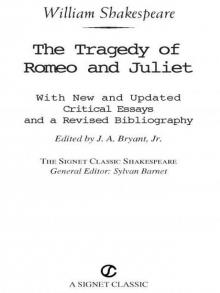 Romeo and Juliet
Romeo and Juliet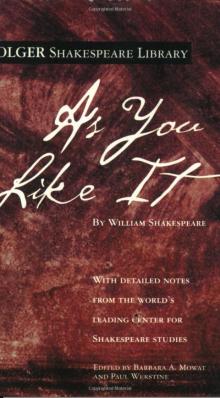 As You Like It (Folger Shakespeare Library)
As You Like It (Folger Shakespeare Library)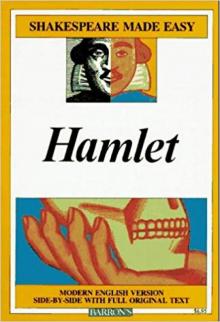 Hamlet
Hamlet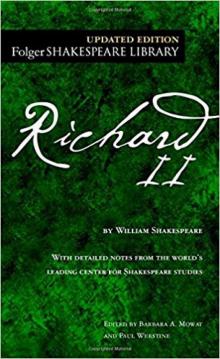 Richard II (Folger Shakespeare Library)
Richard II (Folger Shakespeare Library)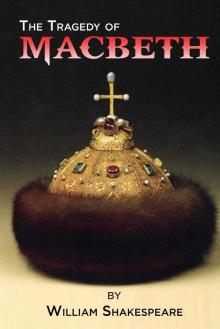 Macbeth
Macbeth Henry V
Henry V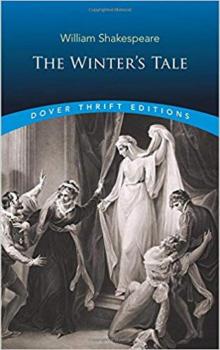 The Winter's Tale
The Winter's Tale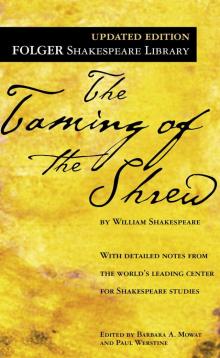 The Taming of the Shrew
The Taming of the Shrew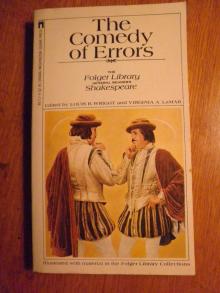 The Comedy of Errors
The Comedy of Errors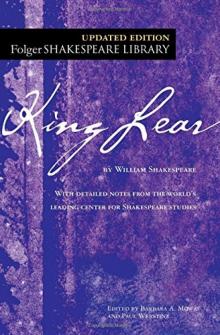 King Lear (Folger Shakespeare Library)
King Lear (Folger Shakespeare Library)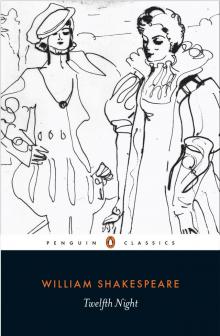 Twelfth Night
Twelfth Night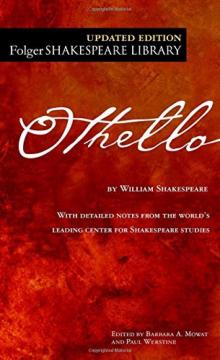 Othello
Othello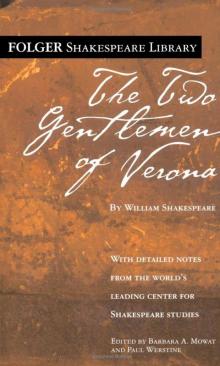 The Two Gentlemen of Verona
The Two Gentlemen of Verona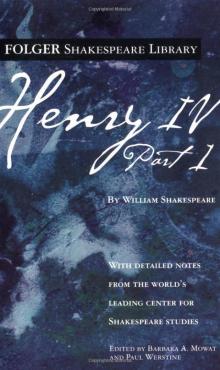 Henry IV, Part 1 (Folger Shakespeare Library)
Henry IV, Part 1 (Folger Shakespeare Library)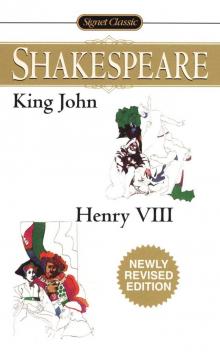 King John/Henry VIII (Signet Classics)
King John/Henry VIII (Signet Classics) The Tempest
The Tempest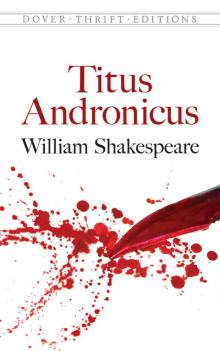 Titus Andronicus (Dover Publications)
Titus Andronicus (Dover Publications)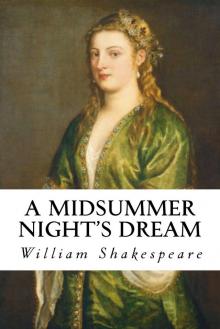 A Midsummer Night's Dream
A Midsummer Night's Dream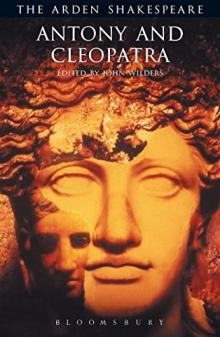 Antony and Cleopatra (Arden Shakespeare: Third Series)
Antony and Cleopatra (Arden Shakespeare: Third Series) The Oxford Shakespeare: Henry IV, Part 2 (Oxford World's Classics)
The Oxford Shakespeare: Henry IV, Part 2 (Oxford World's Classics)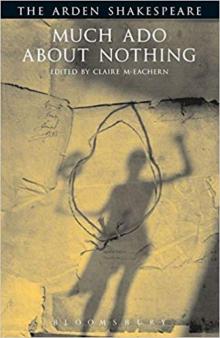 Much Ado About Nothing (Arden Shakespeare: Third Series)
Much Ado About Nothing (Arden Shakespeare: Third Series)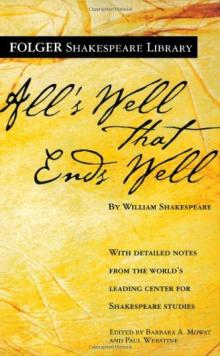 All's Well That Ends Well
All's Well That Ends Well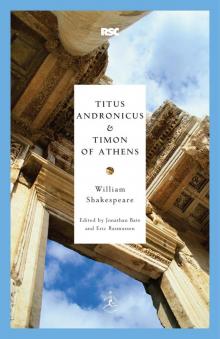 Titus Andronicus & Timon of Athens
Titus Andronicus & Timon of Athens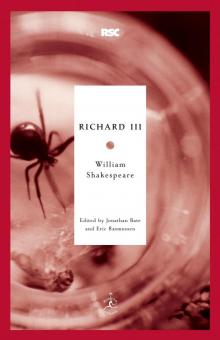 Richard III (Modern Library Classics)
Richard III (Modern Library Classics) Coriolanus
Coriolanus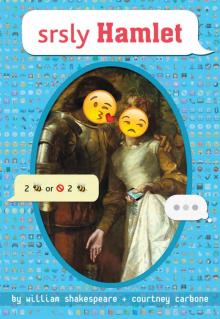 srsly Hamlet (OMG Shakespeare)
srsly Hamlet (OMG Shakespeare)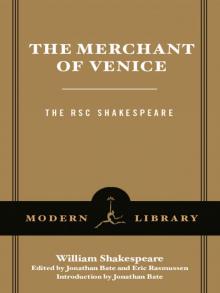 The Merchant of Venice
The Merchant of Venice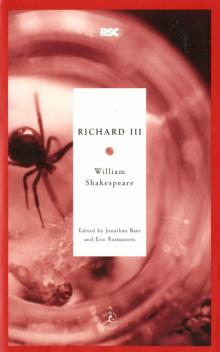 Richard III
Richard III Richard II
Richard II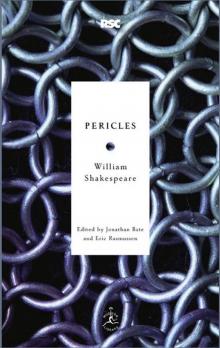 Pericles
Pericles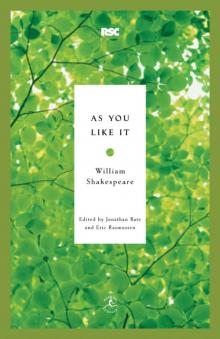 As You Like It
As You Like It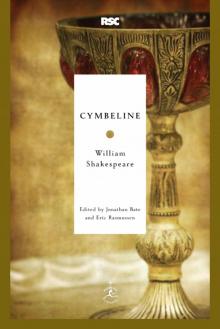 Cymbeline
Cymbeline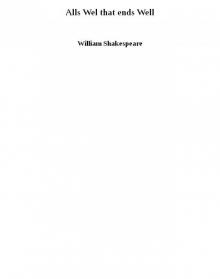 Alls Wel that ends Well
Alls Wel that ends Well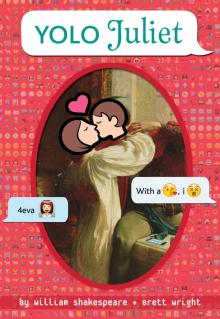 YOLO Juliet
YOLO Juliet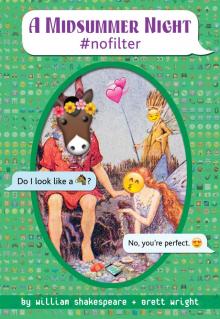 A Midsummer Night #nofilter
A Midsummer Night #nofilter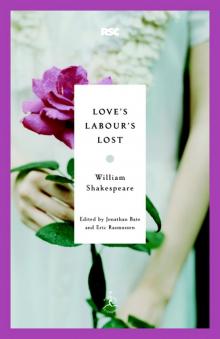 Love's Labour's Lost
Love's Labour's Lost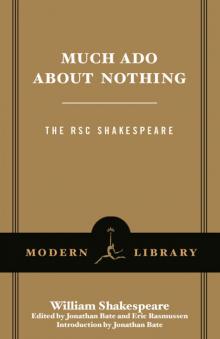 Much Ado About Nothing
Much Ado About Nothing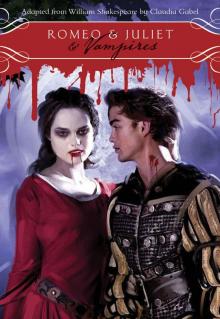 Romeo & Juliet & Vampires
Romeo & Juliet & Vampires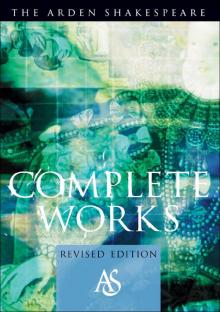 The Arden Shakespeare Complete Works
The Arden Shakespeare Complete Works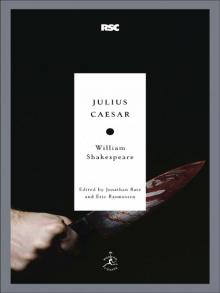 Julius Caesar
Julius Caesar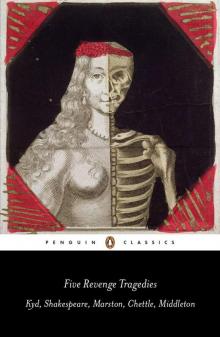 Five Revenge Tragedies: The Spanish Tragedy, Hamlet, Antonio's Revenge, The Tragedy of Hoffman, The Revenger's Tragedy (Penguin Classics)
Five Revenge Tragedies: The Spanish Tragedy, Hamlet, Antonio's Revenge, The Tragedy of Hoffman, The Revenger's Tragedy (Penguin Classics)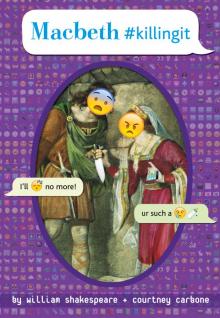 Macbeth #killingit
Macbeth #killingit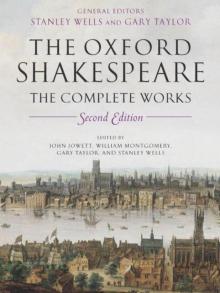 The Oxford Shakespeare: The Complete Works
The Oxford Shakespeare: The Complete Works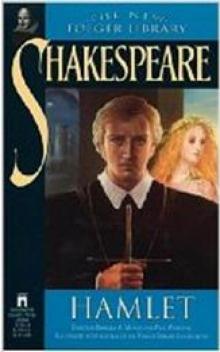 Hamlet, Prince of Denmark (Collins edition)
Hamlet, Prince of Denmark (Collins edition)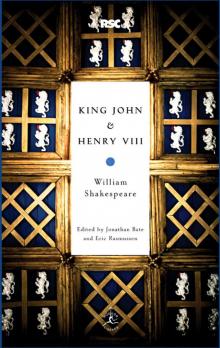 King John & Henry VIII
King John & Henry VIII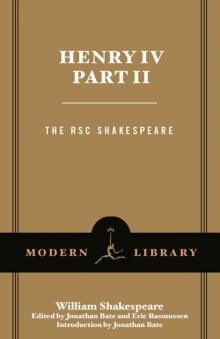 Henry IV, Part 2
Henry IV, Part 2 Complete Plays, The
Complete Plays, The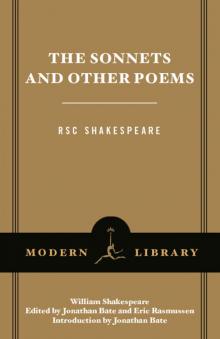 The Sonnets and Other Poems
The Sonnets and Other Poems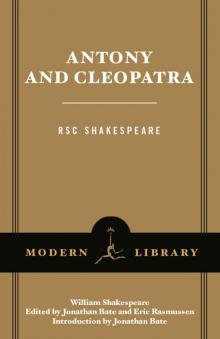 Antony and Cleopatra
Antony and Cleopatra Henry IV, Part 1
Henry IV, Part 1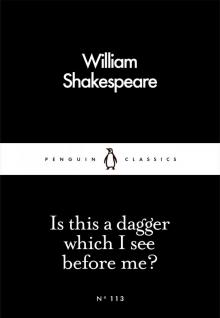 Is This a Dagger Which I See Before Me?
Is This a Dagger Which I See Before Me? The Complete Works of William Shakespeare In Plain and Simple English (Translated)
The Complete Works of William Shakespeare In Plain and Simple English (Translated)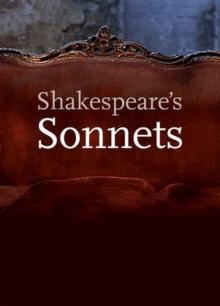 The Sonnets
The Sonnets